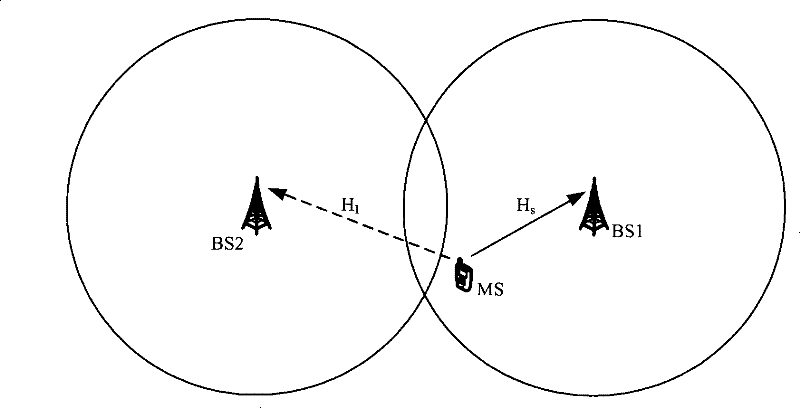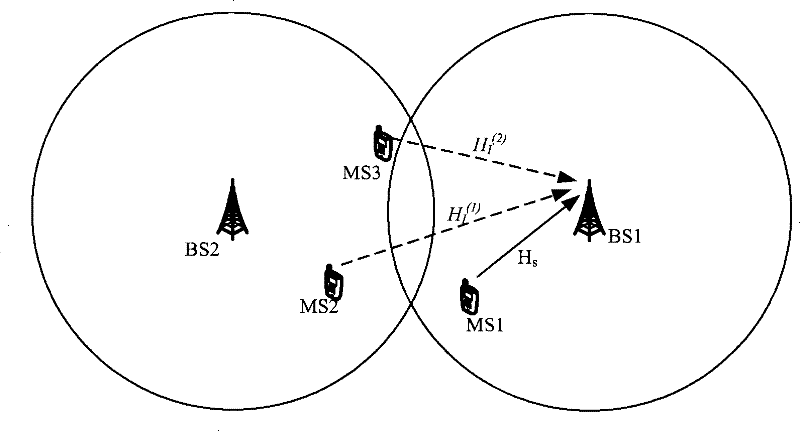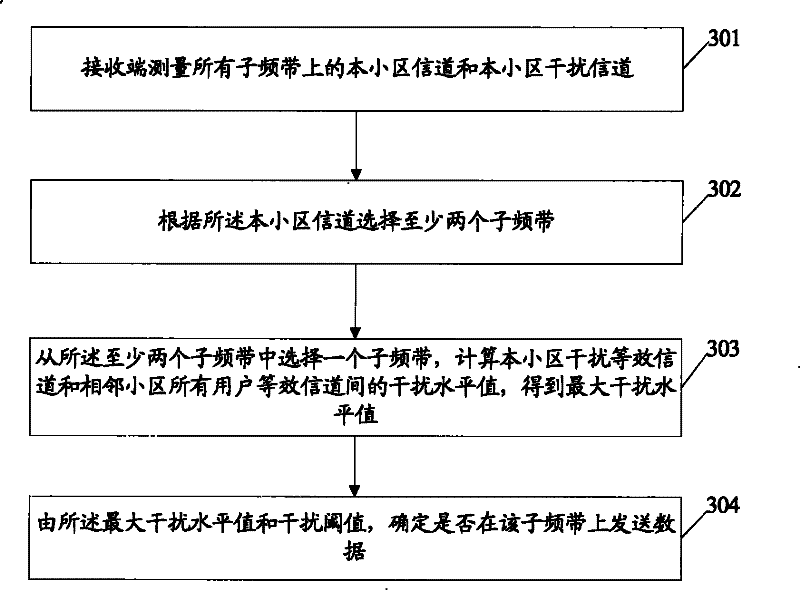Receiving-end transmission resource selection method, receiving-end transmission resource selection device and communication system
A technology for selecting the transmission and receiving end, applied in the field of communication, can solve the problems that the user performance at the edge of the cell is difficult to be further improved, and it is difficult to overcome inter-cell interference, so as to achieve the effect of improving utilization rate and performance
- Summary
- Abstract
- Description
- Claims
- Application Information
AI Technical Summary
Problems solved by technology
Method used
Image
Examples
Embodiment 1
[0057] In this embodiment, an uplink CL-MIMO system in TDD mode is taken as an example to describe the method for selecting transmission resources at the receiving end provided by the present invention. Such as figure 1 As shown, in this embodiment, the receiving end is MS, the sending end of the current cell is BS1, and the sending end of the adjacent cell is BS2. It is assumed that both BS1 and BS2 preset K precoding codebooks (K is greater than or equal to 2). Due to the variability of the channel, BS1 and BS2 need to rotate the precoding codebook at intervals, and the rotation time can be one or more transmission frames, or one or more transmission time slots (TTI, Transmit Time Interval). Assuming that at the Tth TTI time, the precoding codebook of BS1 is C 1 , the precoding codebook of BS2 is C 2 .
[0058] The specific implementation steps of the embodiment of the present invention may be:
[0059] Step 1: The MS obtains the interference threshold β, and the preco...
Embodiment 2
[0095] In this embodiment, an uplink CL-MIMO system in FDD mode is taken as an example to describe another method for selecting a transmission resource at a receiving end provided by the present invention. Such as figure 2 As shown, in this embodiment, the receiving end is BS1, the sending end is the local cell MS1, the interfering cells MS2 and MS3, and so on. The base station of MS1 is BS1, and the base stations of MS2 and MS3 are BS2. It is assumed that both BS1 and BS2 preset K precoding codebooks (K is greater than or equal to 2). Due to the variability of the channel, BS1 and BS2 need to rotate the precoding codebook at intervals, and the rotation time may be one or more transmission frames, or one or more TTIs. Assuming that at the Tth TTI time, the precoding codebook of BS1 is C 1 , the precoding codebook corresponding to BS2 is C 2 .
[0096] The concrete realization of the embodiment of the present invention can be:
[0097] Step 1: BS1 presets the interferenc...
Embodiment 3
[0125] The method for selecting transmission resources at the receiving end provided by the embodiments of the present invention is described above in conjunction with specific embodiments. The following describes the receiving end provided by the embodiment of the present invention in combination with the method provided by the embodiment of the present invention. see Figure 5 , Figure 5 A structural schematic diagram of a receiving end provided in this embodiment, the receiving end device may include:
[0126] The measuring unit 501 is used to measure the channel of the own cell and the interference channel of the own cell on all sub-bands;
[0127] The interference level calculation unit 502 is configured to select at least two sub-frequency bands according to the channel of the local cell, and select a sub-frequency band from the at least two sub-frequency bands, and calculate the interference equivalent channel of the local cell and the adjacent cell on the sub-freque...
PUM
 Login to View More
Login to View More Abstract
Description
Claims
Application Information
 Login to View More
Login to View More - Generate Ideas
- Intellectual Property
- Life Sciences
- Materials
- Tech Scout
- Unparalleled Data Quality
- Higher Quality Content
- 60% Fewer Hallucinations
Browse by: Latest US Patents, China's latest patents, Technical Efficacy Thesaurus, Application Domain, Technology Topic, Popular Technical Reports.
© 2025 PatSnap. All rights reserved.Legal|Privacy policy|Modern Slavery Act Transparency Statement|Sitemap|About US| Contact US: help@patsnap.com



